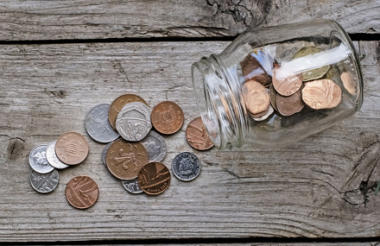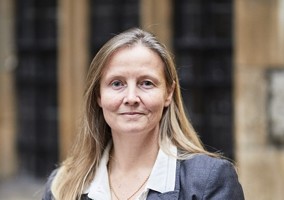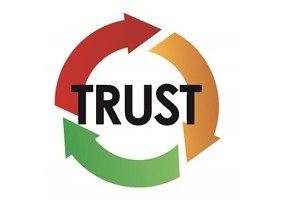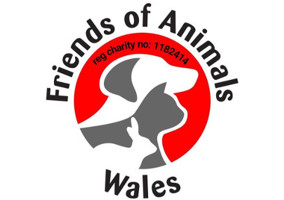It's the lead up to Halloween, there's a chill in the air, it must be time to head to the out-of-season Dutch seaside resort of Noordvijk for three days of full immersion at the International Fundraising Conference. It's full on fundraising. FOR THREE DAYS. So, here's some of what we learned deep in the Dutch countryside:
There are lots of things fundraisers wished they'd thought of
Over recent years, non-profit organisation SOFII has held a session titled I Wish I'd Thought of That (IWITOT) where fundraisers speak for seven minutes on a campaign or initiative that has inspired them and well, they wish they'd thought of. Couple of highlights this year included:
Chief executive officer of Dream Factory Foundation in South Africa Nomfundo Dlangisa cited the MySchool MyVillage MyPlanet loyalty card. The membership scheme was set up in the late 1990s and involves partnership companies giving a percentage of the sales of goods to a charity of their choice working in three main areas: education, community projects and the environment. Members can choose to donate to three organisations of those signed up to the scheme each time they buy anything from a retailer and swipe the loyalty card. The scheme currently generates over £210,000 per month through 1.2 million cardholders for 10,000 organisations.
Country head at DTV Asia Borie Yi Han talked about a scheme created in 2017 by a South Korean organisation called Good Neighbours to provide sanitary products to the estimated 100,000 Korean girls and young women that can't afford them. The Twinkle Twinkle Little Box is a high-quality pack that includes among other things six months of sanitary pads of different sizes, a heat pack, a user guide, and even a make-up mirror. To promote the product, they engaged a local high-end fashion YouTube influencer and blogger with more than 700,000 followers to open the box and describe its contents and purpose on her YouTube channel.
Within a few months, Good Neighbours had signed up 7,390 donors, mostly millennials. Now it has more that 1m supporters and generates an annual income of $180m.
Live stream fundraising is where it is at
No disrespect to the other speakers on the programme, but every fundraiser should have been at the session on live stream fundraising first thing on Thursday. Live stream fundraising involves an influencer or "creator" completing tasks or playing a game while people donate in real time to help them achieve certain goals. It's an incredibly fast-growing channel, raising $33m through the Twitch platform alone last year, up from £13m in 2017.
A pioneer in this method is War Child UK and head of partnerships Nick Scott explained how it has generated £2.5m for the charity over the last four years, now accounting for 6 per cent of all fundraised income and engaging 1m people in online fundraisers and gaming events.
"Fundraisers are always looking for ways to create more personal connections with people and more and more of us are spending the majority of our free time online," said Scott. "The next generation consume information in a different way, using different tools. And the popularity of live streaming of gaming has exploded."
So how do you do it? Scott and his fellow speakers – Alyssa Sweetman of Twitch and Micheal Wasserman of another live streaming platform Tiltify – explained that there are few key things to bear in mind:
- A static website with a donate button does not engage this type of donor. They want to do something fun, interactive and creative. So this is a new, not conflicting, market.
- Online micro-influencers, those who have a relatively small but very loyal following, are more productive fundraisers than those who have millions of followers.
- Not all games or esports work for fundraising – some esports are taken very seriously, such as League of legends, so although you get a lot of people viewing the stream, giving amounts are much lower. Other games, which are more playful and interactive such as adventure and first person games, do much better for fundraising.
- Find an influencer that is known for a particular game that has a connection, however slim, to your cause. For example, if you are raising capital for a building, Minecraft may be a good fit.
Turning a crisis into a donor magnet
Most people looked on helplessly as the fires raged in the Amazon earlier in the year. However, Amazon Watch Sweden, which works to protect the habitats and traditions of indigenous cultures in the region, instantly created an event to generate awareness. The organisation collaborated with 29 other charities and NGOs, including Greenpeace, Amnesty and Fridays for the Future, to organise a march demanding that the rights of indigenous people and their lands be protected. The initiative galvanised more 2,000 people to protest in the capital on Brazil National Day.
The key from a fundraising point of view was that there was no fundraising. There was no ask during the campaign at all and yet Amazon Watch Sweden saw an increase of 225 per cent followers on social media during the event and 2000 per cent increase in donations. From those that donated there was a 14 per cent conversion to another one-off payment and 15 per cent to monthly donations.
Related articles
|












